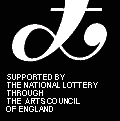SELF STUDY STUDENTS - Page 4
Beauty
The Spirit of Master Basho was humble and simple, so there are a lot of humble and simple subjects. The sort of poverty embraced by a monk or wandering poet with no possessions is celebrated, as is the simple life of fleas and flies and so on.
Everything in haiku is in the present. You might get reference to a memory or a dream, but the poem is always firmly based in an immediate experience and written in the present tense. The poems do not cover a wide time-span. They happen in an instant, which is now. You must not try and write one which tells us about planting the bulbs, and then seeing the hyacinths weeks later!
There are traditional moods and flavours to haiku: loneliness often colours a poem, and not always with misery; grateful acceptance is a traditional Buddhist attitude; and Basho emphasised delight in simple things. The poem may be a description of a natural scene, but have a strong associated feeling.
The haiku that are considered the most beautiful have images that have hit upon universal oppositions: something in movement and something still; something massive and something delicate; something natural and something man made; rising things and falling things; a living thing and an inanimate one; warmth and chill; something clear and something hazy. Or they might put together more subtle combinations that are beautiful in their contrast: a sound and a smell; a feeling and an object; loneliness in company. Look for these lovely qualities.
Zen Buddhism
There is a strong association between Zen Buddhism and haiku. Basho studied Zen, and sometimes dressed as a Zen priest, with his head shaved. Issa lived for several years in monasteries and took his name from the Buddhist ideas of emptiness and change. Basho insisted that a life dedicated to haiku poetry was a "Way" to enlightenment.
The words to watch out for in haiku poems, which are associated with Zen practice, are:-
» words referring to sitting, or balancing or perching (meditation is done sitting balanced on a cushion);
» the words for emptiness, the void, nothing, silence, stillness etc. (referring to the state of mind achieved in meditation and the nature of the ultimate reality perceived through meditation);
» words for awakening, waking up etc. (referring to enlightenment, the great insight into the nature of reality);
» and words such as the way, the path, the road which refer to the religious life or the practice of a particular art in a religious spirit.
(For a more substantial discussion of this subject, click on Zen and Haiku).
Form
You will see that most of the writers or translators have opted for an English haiku form of less than seventeen syllables. If you count stresses, or accents, you will find that most of them have six stresses, quite a few have five. And the modern writers follow the Japanese classics in using a season-word most of the time, but not always.
The important thing is keeping to Master Basho’s Spirit.
Funny haiku, more about human affairs than nature, are called senryu. There is a separate senryu tradition in Japan. We have only given you a few examples here, by Jackie Hardy, David Cobb and Brian Tasker, because we want to keep the emphasis on Master Basho’s serious Spirit.
You will find One-Image poems and Two-Image poems. In the Two-Image ones, there is an interesting relationship between the two elements, worth talking about.
All these topics are covered at greater length in the REFERENCE SECTION.
next page 
Page 1 | Page 2 | Page 3 | Page 5
to the top
|


